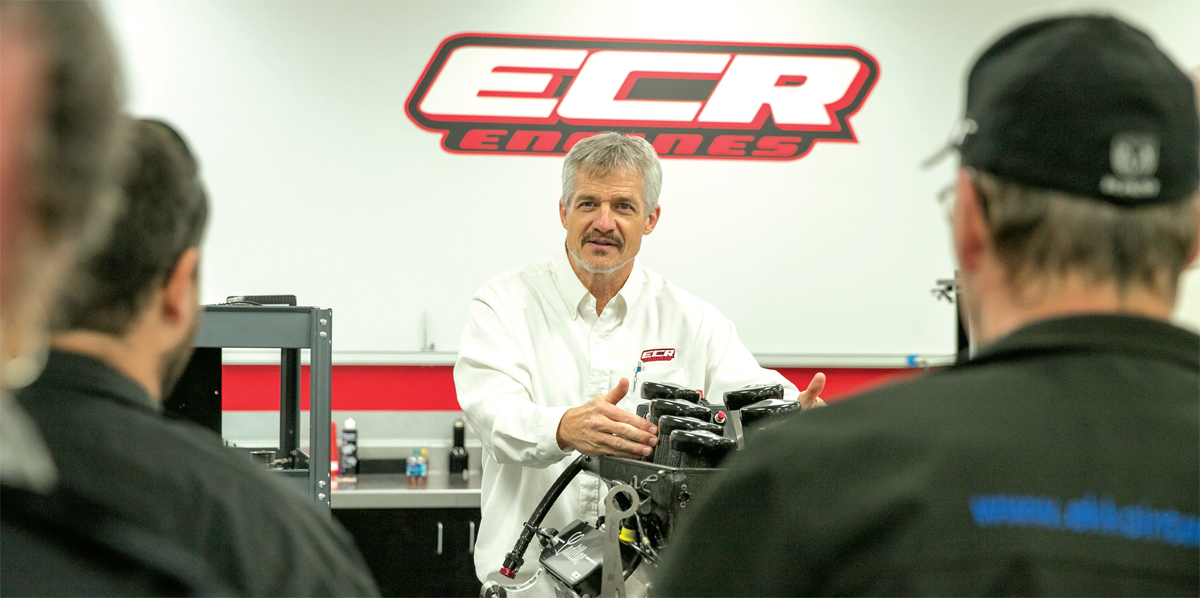Ben Franklin, one of our Founding Fathers, was known for his wit, brilliant theories and overall gumption for a man in the late 1700s. A famous note we’ve taken to heart at American Ethanol is, “If a man empties his purse into his head no man can take it from him. An investment in knowledge pays the best interest.”
Last spring, Dr. Andrew Randolph, technical director of ECR engines, joined University of North Carolina - Charlotte for the last EPIC speaker series of the semester to provide some insight on why the E15 biofuel is a valuable alternative for a variety of vehicles, from NASCAR vehicles to the everyday driver.
Randolph’s research focuses on the combustion properties of alcohol-diesel and alcohol-oil blends, and has contributed to five NASCAR Cup championships with three different teams as technical director of ECR engines. His analysis was based around a comparison of biofuels and gasoline.
“With ethanol, hydrogen burns very clean,” he explained. “Having some oxygen bound to the fuel increases oxidation efficiency. Gasoline, however, produces more carbon emissions when burned.”
Randolph demonstrated this by burning both biofuel and gasoline in different plates and showing the imprint of carbon emissions. For biofuels, the oxygen that is contained in the fuel reduces carbon emissions.
He explained that biofuel’s high octane number, which quantifies the susceptibility of a fuel to autoignite, reduces this susceptibility and aligns with automotive industry trends toward smaller displacement, high-specific power engines.
Biofuel also has a high heat of vaporization that further increases octane above published values and provides a power boost via charge cooling.
“Ethanol is the safest, least expensive octane booster,” said Randolph. “Ethanol has nearly three times the Hvap [heat of vaporization] as gasoline. Power also increases with a cooler intake charge because the density increases.” Heat of vaporization is the amount of energy required to convert a substance from its liquid phase to its gaseous phase.
He acknowled the higherheating value of biofuels that results in 34 percent less fuel economy than pure gasoline, but argued that the cost of fuel drops faster than the fuel mileage, making biofuel-gasoline blends a bargain.
Another counterargument posed is that water is not soluble in gasoline, making it harmful to boat engines, but Randolph noted that any water in the fuel system is only an issue for boaters operating on pure gasoline.
Randolph also addressed the notion that biofuels ruin small engines by explaining that small engines are calibrated “extremely rich,” so the fuel can aid with cooling. (The carburetor on the engine is set to run richer or heavier in fuel compared to air.)
Small engines are set to run rich because it runs cooler and is considered to put less stress on the engine. Ethanol has cooling properties, so it is a win-win.
When ECR implemented fuel with higher biofuel blends into NASCAR, the engine power increased slightly. This was because the biofuel provided more cooling so the post-race piston hardness increased.
When asked about the potential shift from 10 to 15 percent biofuels, Randolph explained that it’s a slow transition because of older model cars.
“We have to work our way up slowly because of potential difficulty with the calibration in older cars,” he said. “But I do think we will go national. There will be no problems associated with it in the future.”
We will continue to invest in knowledge at American Ethanol, and the interest we accrue is showing to be fruitful.
E15 is available in 29 states. North Carolina adopted it and is fifth in the nation. There are almost 1,400 stations nationwide.







